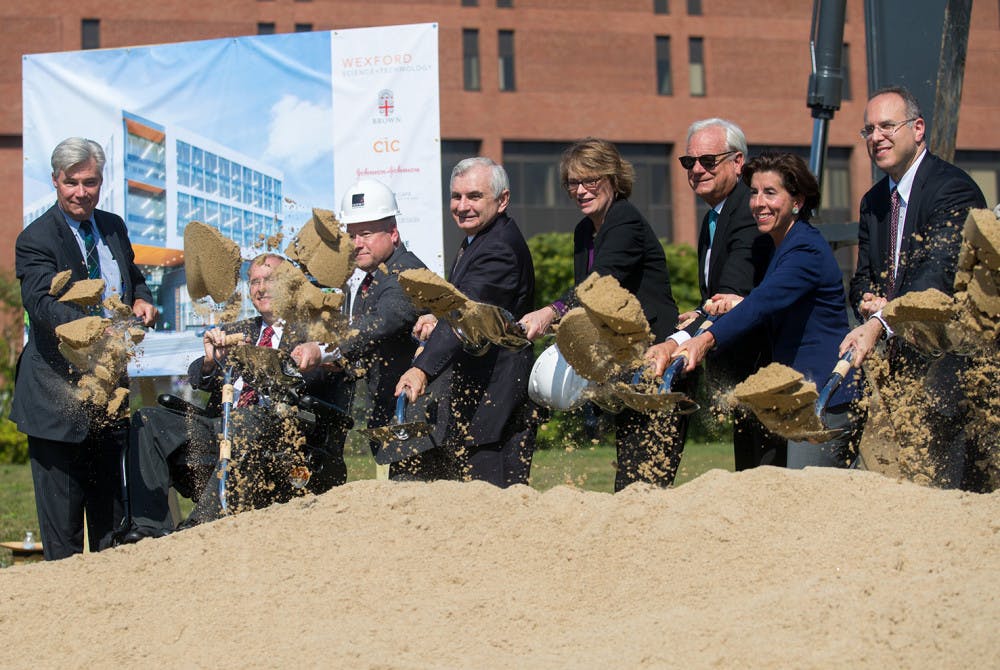Brown featured prominently in Rhode Island real estate news this past week, as it announced the opening of South Street Landing, a new, mixed-use commercial and retail redevelopment of the derelict South Street Power Plant in Providence’s Jewelry District. The $220 million project took six years to build and has already been called “an academic and economic powerhouse” by the University, which plans to move more than 400 staff members from 11 administrative departments to their new offices down the hill starting this Friday. This news comes just three weeks after President Christina Paxson P’19 and Gov. Gina Raimondo announced the ground-breaking of the Wexford Innovation Center, a building that will eventually house Brown’s School of Professional Studies. The Wexford Innovation Center’s ground-breaking likely catalyzed yet another development two weeks later: River House, a 174-unit luxury apartment community that will abut Brown’s buildings in the Jewelry District.
Just as Amazon’s search for a second headquarters has mayors across the country salivating, Brown’s move into Providence’s real estate market has Raimondo singing praises of Brown’s vision. “A few key projects like (Wexford) will be catalytic in moving the state forward to the 21st-century economy,” she said at the ground-breaking. She also claimed that Brown’s partnership will spur the state’s economy and bring in scientific and technological innovators. Likewise many Rhode Islanders see these developments as a much-needed move to reinvigorate Providence’s economy. Though Rhode Island seems to view Brown as its beacon of economic hope, Brown’s real estate developments are not as beneficial as they seem.
First, the entire initiative stinks of gentrification. High-value tenants like Brown will be sure to increase the property values of surrounding lots. How ironic that Brown, rather than a for-profit company or private equity firm, is leading the charge. You don’t have to conduct a survey to realize that most Brown students dislike the idea of gentrification in general. But perhaps it’s not that ironic if you see this as yet another decision by the Brown administration that unapologetically diverges from the collective social viewpoint of the student body.
Second, Brown’s expansion into the Jewelry District will not yield the type of wide-reaching financial benefits that Rhode Islanders seem to expect. Brown is exempt from paying the commercial property real estate tax because of its designation as a nonprofit institution, meaning that Brown-owned properties like the South Street Landing won’t pay property taxes. It’s true that the University agreed to make annual payments of $4 million to the city for 11 years in 2012. However, if Brown actually paid the commercial property real estate tax on all of its Providence properties like other companies, it would generate about $38 million in tax revenue annually, according to the Tax Foundation. That equates to a $34 million annual discrepancy between Brown’s payments and the payments that would be received from a for-profit institution, which isn’t exactly spare change for a relatively small city like Providence. The Lincoln Center for Land Policy also claims that these types of voluntary payments, also known as payments in lieu of taxes, are “often haphazard, secretive and calculated in an ad hoc manner.” Furthermore, Brown could very well renegotiate to a much lower price point in 2033 if it desires. By that time, the University could own more buildings in the Jewelry District for which they will be paying a tax discount. If city officials somehow think they’re getting a good deal out of this, they’re fooling themselves.
It is also worth considering that this development frenzy is occurring at an unusually favorable time for Providence and Rhode Island’s budget. Mayor Jorge Elorza announced that the city is expecting to report a year-end operating surplus of over $10 million, while Gov. Gina Raimondo reported a state budget surplus of $63.9 million this year. Rhode Island residents might be falsely attributing some of the state’s fiscal success to the University, a major part of the Providence economy — but this credit is misplaced. And besides, the state’s fiscal status isn’t as positive as headlines might indicate — the surplus conceals the massive cuts to critical agencies like the Department of Children, Youth and Families, with more unspecified cuts to come. This is worth noting, as Brown’s esteemed reputation as a Rhode Island economic engine will wear off as soon as the state and local budgets catch another unlucky break.
This isn’t to say that Brown’s development is absolutely and entirely bad: I am sure that the University’s majority stake in South Street Landing — 136,000 of the building’s 265,000 square feet will be leased by Brown — will encourage other businesses and employers to move into the mixed-use development, which will stimulate wider economic growth. But I will say that the hype around the project, and future Brown-sponsored projects, is concerning. Brown’s redevelopment initiative looks good, but I believe that the University’s contributions to the public good have been — and continue to be — overvalued.
Andrew Friedman ’19 can be reached at andrew_friedman@brown.edu. Please send responses to this opinion to letters@browndailyherald.com and other op-eds to opinions@browndailyherald.com.





